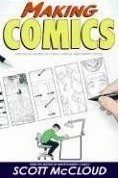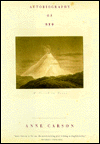Finished
The botany of desire: A plant's-eye view of the world (2001)
by Michael Pollen.
How the apple, the tulip, marijuana, and the potato have spread their existence, their varieties, and their
genes by the seduction of humans through the human desires for sweetness, beauty, intoxication, and control.
The chapter on the apple is eye-opening on the truth-behind-the-legend of Johnny Appleseed.
The chapter on marijuana gives insight on toxic and intoxicant plants, including entheogens
("the god within") worshipped "as a path to divine knowledge. ... What a natural history
of the divine would show is that the human experience of the divine has deep roots in
psychoactive plants and fungi." An interesting note [p. 147] on the platonic ideal:
| "Under the spell of cannabis 'every object stands more clearly for all of its class,'
as David Lenson writes in On Drugs. 'A cup looks like the Platonic Idea of a cup,
a landscape looks like a landscape painting,
a hamburger stands for all the trillions of hamburgers served,'
... A psychoactive plant can open a door onto a world of archetypal forms,
or so they can appear.
Whether or not such a plant or fungus did this for Plato himself is of course
impossible to ascertain ...
But one could do worse, surely, searching for the spring of a metaphysics as
visionary and strange as Plato's."
|
Summarizing some of the brain research of Allyn Howlett, Lenson reports [p. 153-154]:
| "The cannabinoid receptors Howlett found showed up in vast numbers all over the brain
(as well as in the immune and reproductive systems), though they were clustered in regions
responsible for the mental processes than marijuana is known to alter:
the cerebral cortex (the locus of higher-order thought),
the hippocampus (memory),
the basal ganglia (movement), and
the amygdala (emotions).
... cannabinoid receptors didn't show up in the brain stem,
which regulates involuntary functions such as circulation and respiration.
This might explain the remarkably low toxicity of cannabis and the fact that no one is know
to have ever died from an overdose.
...
[Howlett listed] various direct and indirect effects of cannabinoids:
pain relief, loss of short-term memory, sedation, and mild cognitive impairment.
'All of which is exactly what Adam and Eve would want after being thrown
out of Eden.
You couldn't design a more perfect drug for getting Eve through the pain of childbirth
or helping Adam endure a life of physical toil.'
"
|
Then there is the effect of
chocolate
on the THC in marijuana and on anandamide, the brain's natural bliss chemical:
| "THC is far stronger and more persistent than anandamide, which, like most
neurotransmitters, is designed to break down very slowly soon after its release.
(Chocolate, of all things, seems to slow this process,
which might account for its own subtle mood-altering properties.)"
|
He [p.168] discusses how "memory is the enemy of wonder"
and that cannabis's memory-inhibition property may well be the cause of
much of the pleasure of its company.
The chapter on the potato comments [p.204] that in 1794-England the introduction of the
potato as an alternative staple on the failure of the wheat harvest:
| "In the same way that the potato exempts the potato eater from the civilizing
process of bread making, it also exempts him from the discipline of the economy."
|
The analogy depends, however, on the potato (rather than the wheat) appearing second.
The buried lead [p. 236] is that the FDA does not consider the 'Bt'-containing (genetically
modified) NewLeaf potato a food. In fact,
| "in the eyes of the the federal government, not a food at all but a pesticide,
putting it in the jurisdiction of the Environmental Protection Agency."
|
 Links.
Links.
 Booker Prizes
Booker Prizes
 Best books read.
Best books read.
 Books read
Books read
 Best writers of poetry and prose
Best writers of poetry and prose
 New books on Christianity and Spirituality by Pagels, Ehrman, et al.
New books on Christianity and Spirituality by Pagels, Ehrman, et al.


 Why read a book?
Why read a book?
 Harry Potter;
also
Harry Potter en Español.
Harry Potter;
also
Harry Potter en Español.
 The Mental Health of George W. Bush
The Mental Health of George W. Bush


